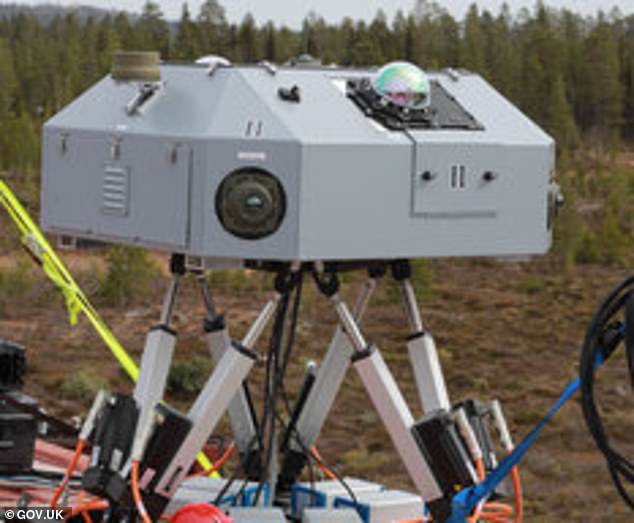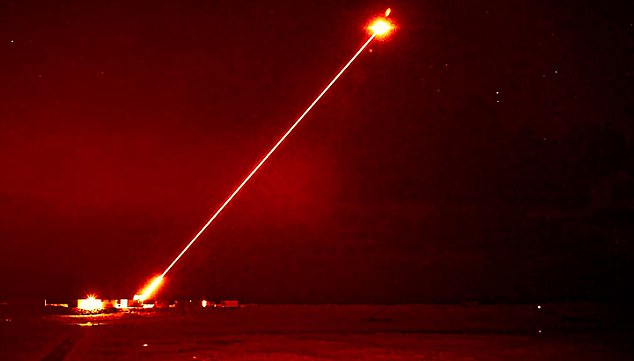- New lasers on British aircraft can target and eliminate incoming threats.
Lasers capable of shooting down swarms of heat-seeking missiles have been successfully tested on British aircraft for the first time, a boon to the Royal Air Force.
The Ministry of Defense announced yesterday that the new “air protection lasers” had destroyed 100 percent of their targets in a live firing test in Sweden.
The Miysis system is capable of detecting incoming missiles, tracking them and firing a jamming laser with “maximum precision.”
“Threats are defeated faster than the time it takes to read this sentence,” the Ministry of Defense said in a statement, announcing the success of the pioneering technology produced in the United Kingdom.
Earlier this year, the UK successfully tested its DragonFire laser-directed energy weapon in Scotland, capable of “striking” and “slashing” targets “at the speed of light.”
British A400s (pictured) and surveillance aircraft could be equipped with lasers in the near future

Lasers identify incoming missiles and fire jamming lasers to “confuse” them
Miysis lasers work like traditional flares to “confuse” missile guidance systems and direct rockets away from their targets.
They are being designed to fit on Britain’s A400M transporters and Shadow R2 intelligence-gathering aircraft to help evade threats “such as missiles.”
The Ministry of Defense said the tests had been carried out at the Vidsel test range in Sweden, in which a “range” of heat-seeking infrared missiles were fired simultaneously.
The lasers are designed and developed by the Team Pellonia partnership between Leonardo UK, Thales UK and the Ministry of Defence’s own Defense Science and Technology Laboratory.
The collaboration helped create 1,950 jobs across Scotland, the MoD reports.
John Healey, the Defense Secretary, said of the development: “Identifying, tracking and defeating threats from the air in seconds is crucial to having the upper hand on those who seek to harm us.”
‘We are equipping our Armed Forces with the latest technology to keep them safe and give them an advantage in operations.
“This high-tech laser is another excellent example of working together between our Dstl experts and the UK defense industry.”
The MoD boasts that lasers offer the “best-in-class protection” with “complete operational independence.”
He suggests the new capacity could be offered to “export customers”.
The MoD and the Defense Science and Technology Laboratory reported in January that a trial of another laser capable of “cutting” a target had been tested at the MoD’s Hebrides firing range.
The DragonFire Laser Directed Energy Weapon (LDEW) can “strike any visible target” by firing a high-powered laser into the sky.
“The accuracy required is equivalent to hitting a £1 coin from a kilometer away,” the MoD said.

The DragonFire LDEW is capable of attacking “any visible target” (pictured)

A US AC-130 combat helicopter deploys flares capable of distracting incoming missile threats.
It costs “typically less than £10 per shot” to fire, offering the potential to replace expensive missiles in a variety of tasks.
Then-Defence Secretary Grant Shapps said at the time that “this type of cutting-edge technology has the potential to revolutionize the battlespace by reducing reliance on expensive munitions, while reducing the risk of collateral damage.”
The MoD has announced plans to fund a multi-million pound program to “transition” the technology from testing to the field.
The LDEW research came with a £100m price tag, the result of a joint investment between the MoD and industry partners.

